PIPERITONE
Modify Date: 2024-01-02 17:33:37
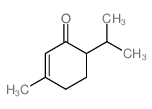
PIPERITONE structure
|
Common Name | PIPERITONE | ||
|---|---|---|---|---|
| CAS Number | 89-81-6 | Molecular Weight | 152.23 | |
| Density | 0.93g/cm3 | Boiling Point | 233ºC | |
| Molecular Formula | C10H16O | Melting Point | -29ºC | |
| MSDS | N/A | Flash Point | 90.9ºC | |
Use of PIPERITONEPiperitone is as a powerful repellent and antiappetent agent. Piperitone is very toxic to Cymbopogon schoenanthus (C. schoenanthus) adults, newly laid eggs and to neonate larvae. Insecticidal activity[1]. |
| Name | piperitone |
|---|---|
| Synonym | More Synonyms |
| Description | Piperitone is as a powerful repellent and antiappetent agent. Piperitone is very toxic to Cymbopogon schoenanthus (C. schoenanthus) adults, newly laid eggs and to neonate larvae. Insecticidal activity[1]. |
|---|---|
| Related Catalog | |
| In Vitro | Piperitone isolated from Cymbopogon schoenanthus (C. schoenanthus)[1]. |
| In Vivo | The insecticidal activity of crude essential oil extracted from Cymbopogon schoenanthus and of its main constituent, Piperitone, is assessed on different developmental stages of Callosobruchus maculatus (C. maculatus). Piperitone is toxic to C. maculatus adults with a LC50 value of 1.6 μL/L. Piperitone inhibits the development of newly laid eggs and of neonate larvae, but is less toxic than the crude extract to individuals developing inside the seeds. Piperitone shows the strongest ovicidal activity. All the eggs were aborted at 6.7 μL/L. Piperitone (10 μM) kills all the neonate larvae[1]. Animal Model: Fifty pairs of C. maculatus adults[1] Dosage: 6.7, 10, 16.7 or 33.3 μL/L Administration: 24 hours Result: Piperiton was more toxic than crude oil because the LC50 recorded was 1.6 μL/L for Piperitone vs. 2.7 μL/L for the crude oil. |
| References |
| Density | 0.93g/cm3 |
|---|---|
| Boiling Point | 233ºC |
| Melting Point | -29ºC |
| Molecular Formula | C10H16O |
| Molecular Weight | 152.23 |
| Flash Point | 90.9ºC |
| Exact Mass | 152.12000 |
| PSA | 17.07000 |
| LogP | 2.56780 |
| Index of Refraction | -60 ° (C=4, benzene) |
|
Section I.Chemical Product and Company Identification Chemical Name Piperitone Portland OR Synonym2-Cyclohexen-1-one, 3-methyl-6-(1-methylethyl)- (CA INDEX NAME); 1-p-Menthen-3-one; 6-Isopropyl-3-methyl-2-cyclohexen-1-one Chemical FormulaC10H16O
89-81-6 CAS Number Section II.Composition and Information on Ingredients Chemical NameCAS Number Percent (%)TLV/PELToxicology Data Piperitone89-81-6Min. 94.0 (GC) Not available.Rat LD50 (oral) 2450 mg/kg Mouse LD50 (subcutaneous) 1420 mg/kg Section III. Hazards Identification Acute Health EffectsIrritating to eyes and skin on contact. Inhalation causes irritation of the lungs and respiratory system. Inflammation of the eye is characterized by redness, watering, and itching. Skin inflammation is characterized by itching, scaling, reddening, or, occasionally, blistering. Follow safe industrial hygiene practices and always wear proper protective equipment when handling this compound. Chronic Health EffectsCARCINOGENIC EFFECTS : Not available. MUTAGENIC EFFECTS : Not available. TERATOGENIC EFFECTS : Not available. DEVELOPMENTAL TOXICITY: Not available. Repeated or prolonged exposure to this compound is not known to aggravate existing medical conditions. Section IV.First Aid Measures Eye ContactCheck for and remove any contact lenses. In case of contact, immediately flush eyes with plenty of water for at least 15 minutes. Get medical attention. Skin ContactIn case of contact, immediately flush skin with plenty of water. Remove contaminated clothing and shoes. Wash clothing before reuse. Thoroughly clean shoes before reuse. Get medical attention. If the victim is not breathing, perform mouth-to-mouth resuscitation. Loosen tight clothing such as a collar, tie, belt or Inhalation waistband. If breathing is difficult, oxygen can be administered. Seek medical attention if respiration problems do not improve. INDUCE VOMITING by sticking finger in throat. Lower the head so that the vomit will not reenter the mouth and throat. Ingestion Loosen tight clothing such as a collar, tie, belt or waistband. If the victim is not breathing, perform mouth-to-mouth resuscitation. Examine the lips and mouth to ascertain whether the tissues are damaged, a possible indication that the toxic material was ingested; the absence of such signs, however, is not conclusive. Section V.Fire and Explosion Data Not available. Combustible.Auto-Ignition Flammability Flash PointsFlammable LimitsNot available. Not available. These products are toxic carbon oxides (CO, CO2). Combustion Products Fire HazardsNot available. Risks of explosion of the product in presence of mechanical impact: Not available. Explosion Hazards Risks of explosion of the product in presence of static discharge: Not available. Fire Fighting Media SMALL FIRE: Use DRY chemical powder. LARGE FIRE: Use water spray, fog or foam. DO NOT use water jet. and Instructions Consult with local fire authorities before attempting large scale fire-fighting operations. Continued on Next Page Piperitone Section VI.Accidental Release Measures Spill CleanupCombustible material. Irritating material. Keep away from heat. Mechanical exhaust required. Stop leak if without risk. Finish cleaning the spill by rinsing any Instructions contaminated surfaces with copious amounts of water. Consult federal, state, and/or local authorities for assistance on disposal. Section VII. Handling and Storage COMBUSTIBLE. IRRITANT. Keep away from heat. Mechanical exhaust required. Avoid excessive heat and light. Do not Handling and Storage breathe gas/fumes/ vapor/spray. Information Always store away from incompatible compounds such as oxidizing agents. Section VIII. Exposure Controls/Personal Protection Provide exhaust ventilation or other engineering controls to keep the airborne concentrations of vapors below their respective Engineering Controls threshold limit value. Ensure that eyewash station and safety shower is proximal to the work-station location. Splash goggles. Lab coat. Vapor respirator. Boots. Gloves. Suggested protective clothing might not be sufficient; consult a Personal Protection specialist BEFORE handling this product. Be sure to use a MSHA/NIOSH approved respirator or equivalent. Exposure LimitsNot available. Section IX. Physical and Chemical Properties Liquid. (Clear, light yellow ~ yellow.)Solubility Physical state @ 20°CInsoluble in water. 0.94 (water=1) Specific Gravity Molecular Weight152.23Partition Coefficient LOG Pow: 2.5 Boiling Point235°C (455°F)Vapor PressureNot available. -29°C (-20.2°F)Not available. Melting PointVapor Density Refractive Index1.48VolatilityNot available. Not available.Not available. Critical TemperatureOdor ViscosityNot available.TasteNot available. Section X.Stability and Reactivity Data This material is stable if stored under proper conditions. (See Section VII for instructions) Stability Conditions of InstabilityAvoid excessive heat and light. Incompatibilities Reactive with oxidizing agents. Section XI. Toxicological Information OT0257000 RTECS Number Eye Contact. Ingestion. Inhalation. Routes of Exposure Rat LD50 (oral) 2450 mg/kg Toxicity Data Mouse LD50 (subcutaneous) 1420 mg/kg CARCINOGENIC EFFECTS : Not available. Chronic Toxic Effects MUTAGENIC EFFECTS : Not available. TERATOGENIC EFFECTS : Not available. DEVELOPMENTAL TOXICITY: Not available. Repeated or prolonged exposure to this compound is not known to aggravate existing medical conditions. Irritating to eyes and skin on contact. Inhalation causes irritation of the lungs and respiratory system. Inflammation of the eye Acute Toxic Effects is characterized by redness, watering, and itching. Skin inflammation is characterized by itching, scaling, reddening, or, occasionally, blistering. Follow safe industrial hygiene practices and always wear proper protective equipment when handling this compound. Section XII.Ecological Information EcotoxicityNot available. Not available. Environmental Fate Continued on Next Page Piperitone Section XIII. Disposal Considerations Waste DisposalRecycle to process, if possible. Consult your local regional authorities. You may be able to dissolve or mix material with a combustible solvent and burn in a chemical incinerator equipped with an afterburner and scrubber system. Observe all federal, state and local regulations when disposing of the substance. Section XIV. Transport Information Not a DOT controlled material (United States). DOT Classification PIN NumberNot applicable. Proper Shipping NameNot applicable. Packing Group (PG)Not applicable. DOT Pictograms Section XV. Other Regulatory Information and Pictograms TSCA Chemical InventoryThis compound is ON the EPA Toxic Substances Control Act (TSCA) inventory list. (EPA) WHMIS ClassificationCLASS B-3: Combustible liquid with a flash point between 37.8°C (100°F) and 93.3°C (200°F). On DSL. (Canada) EINECS Number (EEC) 201-942-7 EEC Risk StatementsR36/37/38- Irritating to eyes, respiratory system and skin. SECTION 16 - ADDITIONAL INFORMATION N/A |
CHEMICAL IDENTIFICATION
HEALTH HAZARD DATAACUTE TOXICITY DATA
|
| Precursor 7 | |
|---|---|
| DownStream 10 | |
| HS Code | 2914299000 |
|---|---|
| Summary | 2914299000. other cyclanic, cyclenic or cyclotherpenic ketones without other oxygen function. VAT:17.0%. Tax rebate rate:13.0%. . MFN tariff:5.5%. General tariff:30.0% |
| PIPERTONE |
| PIPERITONE |
| PIPERITONE(SG) |
| 3-methyl-6-(1-methylethyl)-2-cyclohexen-1-one |
| P-MENTH-1-EN-3-ONE |
| 3-Carvomenthenone |
| 6-isopropyl-3-methyl-2-cyclohexen-1-one |
| PIPERITON |
| 3-methyl-6-isopropylcyclohex-2-en-1-one |
| 1-Methyl-4-isopropyl-1-cyclohexen-3-one |
| PIPERITONE WITH GC |
| 1-P-MENTHEN-3-ONE |
| 6-isopropyl-3-methylcyclohex-2-en-1-one |
| p-Mentha-1-ene-3-one |
| cinchonidine |
 CAS#:499781-62-3
CAS#:499781-62-3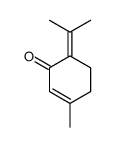 CAS#:491-09-8
CAS#:491-09-8![6-isopropyl-3-methyl-2-[(dimethylthiocarbamoyl)oxy]-2-cyclohexen-1-one Structure](https://image.chemsrc.com/caspic/001/112621-61-1.png) CAS#:112621-61-1
CAS#:112621-61-1 CAS#:61585-35-1
CAS#:61585-35-1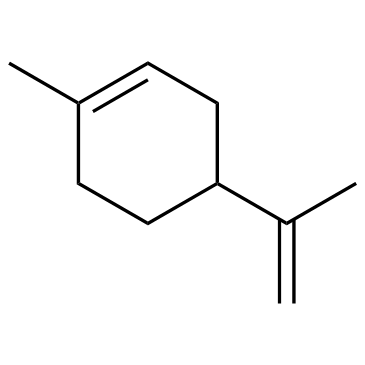 CAS#:138-86-3
CAS#:138-86-3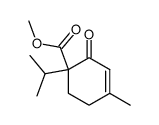 CAS#:78871-90-6
CAS#:78871-90-6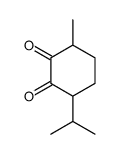 CAS#:34315-76-9
CAS#:34315-76-9 CAS#:15062-34-7
CAS#:15062-34-7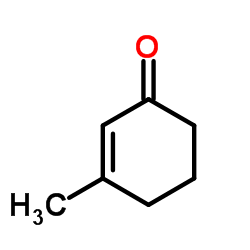 CAS#:1193-18-6
CAS#:1193-18-6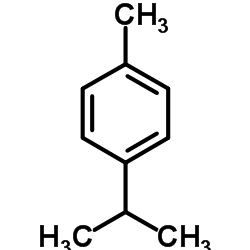 CAS#:99-87-6
CAS#:99-87-6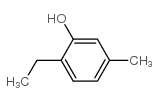 CAS#:1687-61-2
CAS#:1687-61-2 CAS#:108-39-4
CAS#:108-39-4 CAS#:108-38-3
CAS#:108-38-3 CAS#:108-68-9
CAS#:108-68-9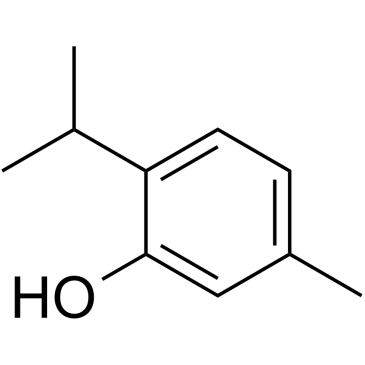 CAS#:89-83-8
CAS#:89-83-8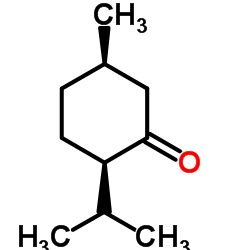 CAS#:491-07-6
CAS#:491-07-6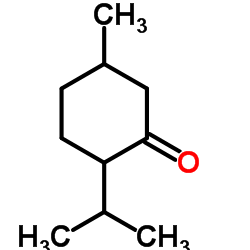 CAS#:10458-14-7
CAS#:10458-14-7
